
New research from Chalmers and ETH Zürich, Switzerland, suggests a promising way to detect elusive dark matter particles through previously unexplored atomic responses occurring in the detector material. The illustration above is a composite image (optical, x-ray, computed dark-matter) of mass distribution in the bullet cluster of galaxies. Credit: Chandra X-Ray Observatory, NASA/CXC/M. Weiss
New research from Chalmers, together with ETH Zürich, Switzerland, suggests a promising way to detect elusive dark matter particles through previously unexplored atomic responses occurring in the detector material.
The new calculations enable theorists to make detailed predictions about the nature and strength of interactions between dark matter and electrons, which were not previously possible.
“Our new research into these atomic responses reveals material properties that have until now remained hidden. They could not be investigated using any of the particles available to us today – only dark matter could reveal them,” says Riccardo Catena, Associate Professor at the Department at Physics at Chalmers.
For every star, galaxy or dust cloud visible in space, there exists five times more material which is invisible – dark matter. Discovering ways to detect these unknown particles which form such a significant part of the Milky Way is therefore a top priority in astroparticle physics. In the global search for dark matter, large detectors have been built deep underground to try to catch the particles as they bounce off atomic nuclei.
So far, these mysterious particles have escaped detection. According to the Chalmers researchers, a possible explanation could be that dark matter particles are lighter than protons, and thereby do not cause the nuclei to recoil – imagine a ping pong ball colliding into a bowling ball. A promising way to overcome this problem could therefore be to shift focus from nuclei to electrons, which are much lighter.
In their recent paper, the researchers describe how dark matter particles can interact with the electrons in atoms. They suggest that the rate at which dark matter can kick electrons out of atoms depends on four independent atomic responses – three of which were previously unidentified. They have calculated the ways that electrons in argon and xenon atoms, used in today’s largest detectors, should respond to dark matter.
The results were recently published in the journal Physical Review Research and performed within a new collaboration with condensed-matter physicist Nicola Spaldin and her group at ETH. Their predictions can now be tested in dark matter observatories around the globe.
“We tried to remove as many access barriers as possible. The paper is published in a fully open access journal and the scientific code to compute the new atomic response functions is open source, for anyone who wants to take a look ‘under the hood’ of our paper,” says Timon Emken, a postdoctoral researcher in the dark matter group at the Department of Physics at Chalmers.
Reference: “Atomic responses to general dark matter-electron interactions” by Riccardo Catena, Timon Emken, Nicola A. Spaldin and Walter Tarantino, 5 August 2020, Physical Review Research.
DOI: 10.1103/PhysRevResearch.2.033195
More on dark matter
What is the Universe made of? This question has fascinated humankind for millennia. Still, it remains largely unanswered, with more than three-quarters of the matter in our Universe believed to be made of particles so elusive that we don’t know what they are. These particles are called dark matter and do not emit or absorb radiation at any observable wavelengths. Detecting the unknown particles is a top priority for scientists worldwide. To detect dark matter, the researchers search for rare dark matter-electron interactions in low-background deep underground detectors.
There is incontrovertible evidence for the presence of dark matter in our Universe. Evidence is based on the observation of unexpected gravitational effects in extremely different physical systems, including galaxies, galaxy clusters, the Cosmic Microwave Background, and the large-scale structure of the Universe. While the European space satellite Planck has conclusively shown that dark matter constitutes about 85 percent of all matter in the Universe, its nature remains a mystery.
More on the scientific paper
Read the article Atomic responses to general dark matter-electron interactions in Physical Review Research. It is written by Riccardo Catena and Timon Emken at the Department of Physics at Chalmers and Nicola Spaldin, and Walter Tarantino at the Department of Materials at ETH Zürich, Switzerland.

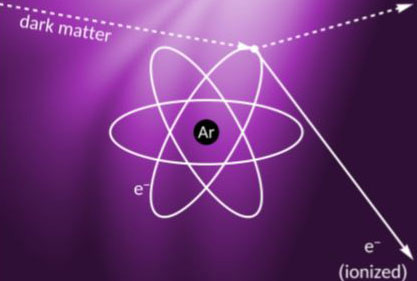
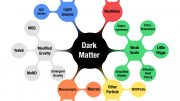
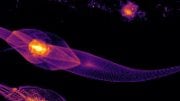

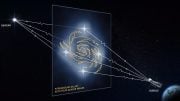

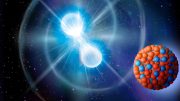
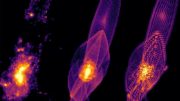
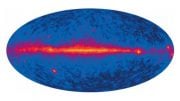
Another possibility, from a view of String Theory, is that Dark Matter appears to us as an effect of string/anti-string annihilations. As you may know, quantum mechanics requires that strings must be formed as pairs in the quantum foam – a string and an anti-string – that immediately annihilate each other. Quantum mechanics also requires both the string and anti-string to be surrounded by “jitters” that reduce their monstrous vibrating energies. What if this jitter remains for a fraction of an instant after their string/anti-string annihilations? This temporary jitter would be seen by us as matter for that instant before it too returns to the foam. That’s why we never see it – the “mass” lasts only for that instant but is repeated over and over and over, all over. Specifics on this can be found in my YouTube at https://www.youtube.com/watch?v=N84yISQvGCk
I’m not Not Bender, but you are endlessly trolling math instead of physics theory (string theory) – see my previous comment on thermal WIMPs which by way of “the WIMP miracle” was superstring theory claim to have physical relevance.
Like all trolling, yours is inane and irritating.
Get bent Bender
Dark matter scattering with normal particles would happen if dark matter was WIMPs – Weakly Interacting Massive Particles. But cosmologists has recently excluded natural – hot big bang thermally generated – WIMPs of the 10-1000 GeV range [ https://scitechdaily.com/dark-matter-destruction-ruled-out-as-origin-of-extra-radiation-in-milky-ways-galactic-center/ ]. The hard exclusion is between twice the electron mass up to 300 times the proton mass which saturate the Griest Kamionkowski (GK) bound on thermal produced annihilating particles (since dark matter presumably has to have dark anti-matter symmetry like all other matter). This may be why this proposal now looks for unnatural mass WIMPs.
But with naturalness gone, the likelihood for dark matter interacting with anything else than the gravity it was discovered with becomes low. Then dark matter can have any mass between inflatons (about 10^-5 Planck mass) and normal matter.
… an negative mass? Ordinary matter would scatter the negative mass and form some webs, and then in that shell the galaxy could form, and even after it is gone it might come back as a next generation …